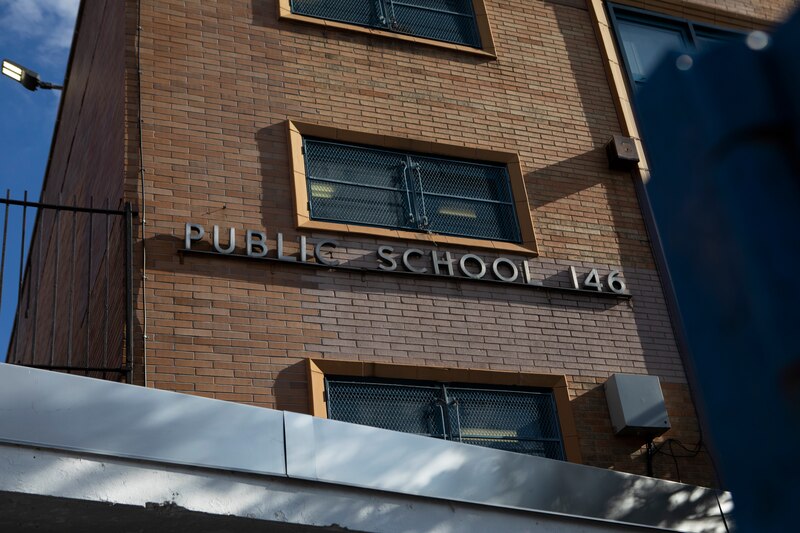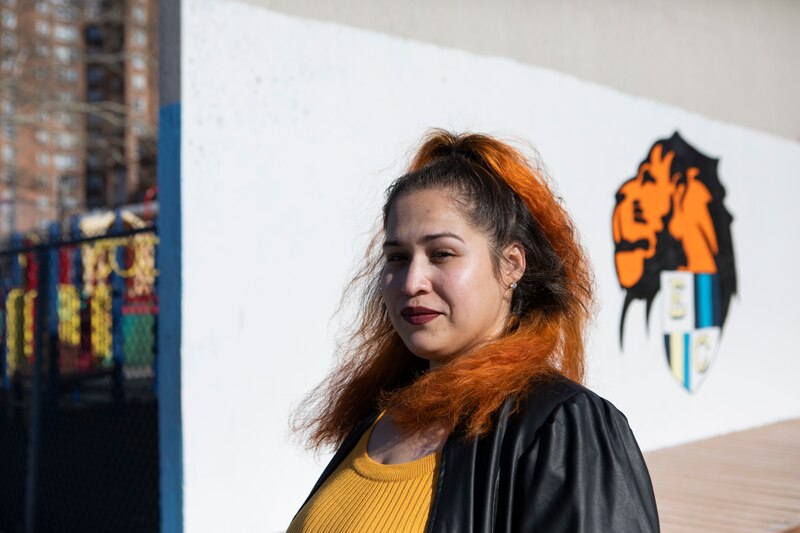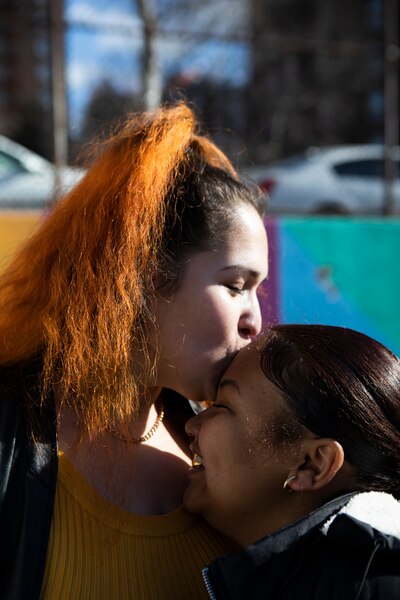Crystal Rodriguez is on a mission.
As one of nearly 650 “Family Healing Ambassadors” tapped by New York City schools at the end of last school year, the 31-year-old Bronx mom is trying to help families wade through the pandemic’s emotional fallout. In the process, she is also embarking on her own path of self-healing.
Ambassadors were selected at schools in areas hit hardest by the coronavirus — largely low-income communities of color — and were awarded a $500 stipend to participate in trauma-related training sessions over the summer and then present their own workshop to their school communities by December. Several ambassadors said that talking with other parents about their feelings and struggles has often not been widely embraced in their communities, leaving many to feel alone and isolated.
This program is trying, in a small way, to change that.
Ambassadors were tasked with creating at least one workshop focused on bolstering emotional well-being. Several ambassadors took the role even farther.
One started “Walk with me Wednesdays” to encourage parents to connect while getting some exercise. Another translated materials from English into Spanish for her school’s social worker. Even though Rodriguez’s “term” is up, she is working on her third workshop, in which she’s been sharing what she’s learned and opening up about her own struggles raising her five children, the first of whom was born when she was 16.
“Mental health has always been a taboo in our community,” Rodriguez said during her January presentation to the small virtual group from P.S. 146 in the South Bronx’s Morrisania neighborhood.
“In my family it’s: ‘What happens at home, stays at home.’ ‘If you get therapy, you’re crazy.’ You can’t speak about your feelings. ’Just man up,’” she said. “It shouldn’t be that way.”
Many advocates are hopeful that the initiative’s peer-to-peer approach can help normalize mental health and wellness in Black, Latino, and immigrant communities. These groups are not only experiencing pain, grief, and financial stress from the pandemic, but also other deep-rooted personal or systemic traumas related to neglect or abuse, hunger and housing instability, racism, and over-policing.

Students in the Bronx, which long has had one of the nation’s highest poverty rates, are among the most likely to experience childhood trauma and its harmful effects on learning, advocates say. The situation is even more dire now: A study by the United Hospital Fund found that between March and July 2020, of the roughly 4,200 New York children who lost a parent or caregiver to COVID, 57% were in the Bronx, Brooklyn, and Queens, with the burden falling disproportionately on Black and Latino children.
“You can talk about learning loss all you want. Children are not going to thrive if they are hungry, and if they are suffering trauma,” said Rasheedah Brown-Harris, a leader with the Bronx’s New Settlement Apartments Parent Action Committee, who has long worked with other parents to transform how schools approach childhood trauma.
Brown-Harris is also a staff member in the education unit of Bronx Legal Services New York where she is part of the Healing-Centered Schools Working Group, formed by a coalition of parents, advocates, and educators. Though the group is not getting paid by the education department, it volunteered to support some of the parent ambassadors while it continues to push for deeper change in Bronx schools in addressing trauma.
“It’s a transformation in how we see ourselves, how we support mental health and how we sustain it for our family and for our school community,” Brown-Harris said.
Emergency room visits jump for children
Children in her community are suffering, Rodriguez said. Their tempers are flaring. Fights have become more frequent. A growing number of children, including her own daughter, seem to be talking about suicidal thoughts and landing in the emergency rooms of local hospitals, she said. This mirrors a trend across the nation where emergency visits jumped 31% for children ages 12 to 17 between February and March 2021 compared to the same period the year before, according to the Centers for Disease Control and Prevention. The increase for girls in that age group was even higher — 51%.
COVID brought illness, and remote learning brought stress to her family, Rodriguez shared during her presentation. She had a newborn, sleepless nights, and separation from the baby’s father. Other losses mounted. A friend died by suicide on Christmas Eve in 2020; another was murdered about a month later. Over the summer, the family’s foundation began to crumble further, when one of her daughters ended up in the emergency psychiatric ward of a hospital after expressing suicidal thoughts to her doctor.
“I felt like I failed my children,” Rodriguez said through tears, as other participants in the meeting typed affirmations in the Google hangout chat, such as, “You got this,” and sent her virtual hugs.
But she also celebrated what she considered a breakthrough, and credited the work she’s done through the ambassador program with inspiring it: She and her children have started therapy.
And, while the process isn’t easy, and her relationship with some of her children is still strained, she acknowledged, Rodriguez feels like she’s standing on more solid ground.
During her presentation, Rodriguez outlined some common signs of trauma in children, ranging from regressions like thumb-sucking and bed-wetting for younger children to unexplained pains and aches in older ones or increased anger and anxiety. She provided practical and accessible tips for families to support their children as they work through their feelings and walked participants through a 2-minute guided meditation. She talked about the importance of using words of affirmation, and praising children’s efforts instead of focusing on the negative.
“A lot of times, unintentionally,” Rodriguez said, “we become our children’s first bullies.”
She dispensed positive rather than punitive parenting advice to the small group — covering topics such as establishing bedtime routines, how to help kids break homework into smaller chunks to make it feel less overwhelming, and focusing on breathing as a way to calm both parents and kids.
“These kids went through a lot. The parents went through a lot. Everyone is witnessing trauma,” Rodriguez told Chalkbeat. “Healing is about accepting that we have to face things we may want to bury in our subconscious. It’s time to open the luggage, unpack, take out what doesn’t fit.”

‘Healing begins at home’
The ambassador program is designed to add support for families to existing mental health services in and outside of school. In New York City schools, there was one counselor for every 325 students last school year, according to the most recent available public data. That’s better than the recommended ratio of one to 500, but with the needs much higher this year, many educators say it’s still not enough.
More generally, the city’s mental health system — as well as the nation’s — is overburdened. President Joe Biden in his State of the Union address this month called to increase providers, and the White House also recognized the need for expanding peer support.
“We must dramatically expand the supply, diversity, and cultural competency of our mental health and substance use disorder workforce – from psychiatrists to psychologists, peers to paraprofessionals — and increase both opportunity and incentive for them to practice in areas of highest need,” the White House said in a statement earlier this month.
New York City’s education department had identified 1,000 schools to select parent healing ambassadors last school year, but only 800 parents or caregivers applied. Roughly 650 of the ambassadors completed the program and engaged with more than 4,000 family and community workshops, education department officials said.
As a result, there’s still money remaining from the $1.35 million grant from the Robin Hood Relief Fund in partnership with the Fund for Public Schools to support trauma-responsive work in schools.
For the second half of the school year, the city is making some tweaks. At 20 schools, it’s piloting a program where ambassadors are part of a “healing-centered” team, working with school staff on planning “healing-centered” events with a budget of $2,500. Additionally, ambassadors in certain neighborhoods who completed their first stint can apply for 92 “district” ambassador roles where they can continue working on a larger scale on community-building activities, sharing mental health resources, and more, according to education department officials.
“Healing begins at home,” said education department spokesperson Suzan Sumer. “We are committed to providing our schools with the supports they need to center student wellbeing as we emerge from this pandemic, and we know parents and caregivers are an integral part of this effort.”
For the summer training sessions, the Bronx Healing-Centered Schools Working Group helped bring in two of the presenters: Chicago’s TREP (Trauma Responsive Educational Practices) Project, and Shawn Ginwright, a San Francisco State University professor of education in the Africana studies department who runs the Flourish Agenda.
The Bronx group also hopes it will get the chance to move ahead with its longer term vision, starting small but going deep with a few schools. They want to create “transformation teams,” to rethink a school’s culture from the types of books children read (ensuring, for example, enough books that center Black characters) to the type of lighting in the building (replacing harsh lights with warmer, more welcoming colors). They talked about creating career paths to encourage more educators from their communities, and looked at models like Schenectady, where the school district removed police officers from schools and replaced them with “cultural brokers” — respected community members, often elders, who intervene when student conflicts arise.
“We don’t know the long-term effects of this pandemic. We won’t know,” Brown-Harris said. “But we do know that we have to slow down, and we all need to reconnect in a way that we have not done in our public school system ever.”

Programs were individualized to the school
The role of the parent healing ambassadors has differed from school to school based on the ambassador as well as the level of support from the school administration. Some focused on self-care, while others directed their efforts on how parents and teachers can collaborate more to recognize trauma. Some parent ambassadors tried to participate in all PTA meetings. Some struggled to get much air time. Some also struggled to get a critical mass of families to participate.
Many parents have felt more comfortable reaching out to the Bronx group rather than the education department, said Shannon O’Neill Fonseca, an organizer with the Parent Action Committee, who has witnessed several of the ambassadors climbing out of their own depression as they’ve connected with their peers.
“They feel seen, they feel heard, and they feel supported,” O’Neill Fonseca said. “They recognized, when I’m in community, we can collectively heal.”
Wanda Jackson, the parent healing ambassador for P.S. 73, where her granddaughter attends kindergarten, has held two workshops for the school’s staff while she plans how to best reach parents. She said that parents at the school have not been participating in school events lately.
“They won’t Zoom. They don’t trust anyone anymore,” said Jackson, a retired parent coordinator. “But me teaching parents to stand up and fight for themselves is one way things can improve.”
Jackson, however, wished that the role came with more than a $500 stipend given the amount of time she is putting into the job. Some ambassadors have been using their own money to provide incentives for families, like small giveaways with gift cards, O’Neill Fonseca noted.
Ysaura Tavarez, the parent healing ambassador for P.S. 204 in Morris Heights, started slowly, introducing a few stress-relieving or mediation activities at PTA meetings. She worked with a mental health specialist on a workshop about burnout and did one on wellness. She also partnered with a school social worker, helping her translate materials from English to Spanish, and has tried to just be present for families, many of whom — like in Rodriguez’s community — are resistant to getting mental health support.
“I’m just allowing the parents to get to know me, for them to see my face more often, asking me questions, offering a safe place for them to just talk about what’s going on and the challenges they’re facing,”said the mom of four, who works as a wedding coordinator and couples coach. “Some of them do feel more comfortable talking to another parent, especially in their own language.”
Parents have opened up to her at the playground or at the McDonalds across the street from the school. They share their concerns with Tavarez about the COVID vaccine, job loss, and balancing the return to work with possible COVID quarantines.

The program helped Tavarez process her own experience, losing relatives to the coronavirus and losing her personal space last year when her children were learning remotely.
For Rodriguez, being part of the program has been transformative. She recently started a new job at a nonprofit focused on teaching financial literacy in schools, and she’s starting to open up more about long-standing issues related to her own depression and anxiety, recounting how she once took her mother’s pills when she was in high school.
Participating in the summer’s training sessions with the other ambassadors helped her feel less alone, she said. By starting therapy, she feels hopeful about beginning to “break that generational curse,” of how trauma is handed down in families.
“The biggest tip for helping our children heal through traumas is healing our own first,” Rodriguez said.
Amy Zimmer is the bureau chief for Chalkbeat New York. Contact Amy at azimmer@chalkbeat.org.

